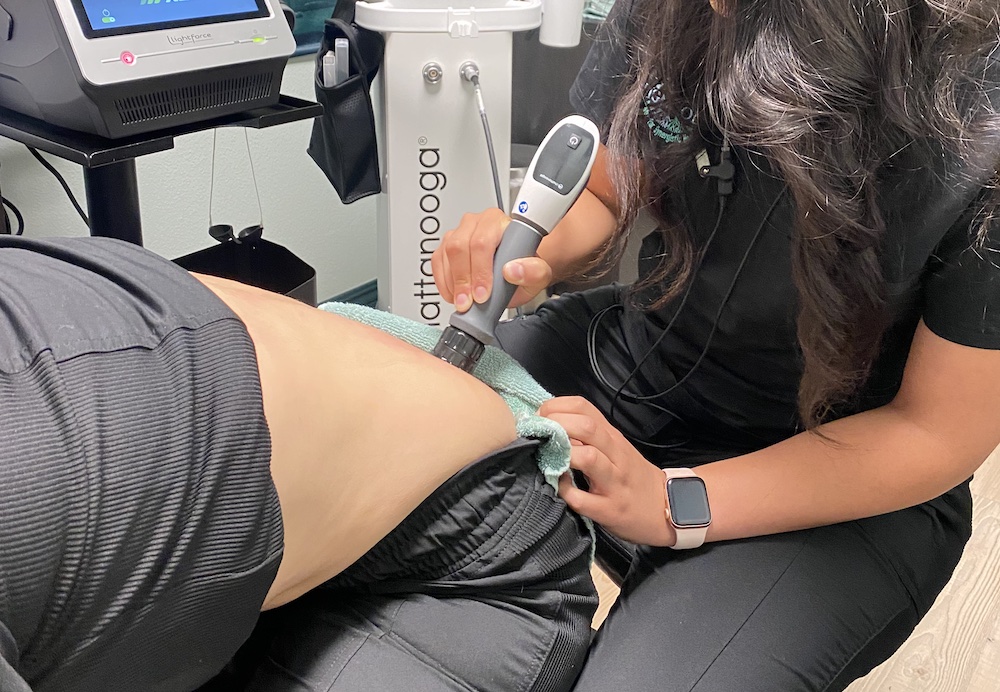If you're dealing with chronic pain, I understand how daunting the search for effective relief can be. Many patients come to me after trying numerous treatments, often feeling frustrated when they don't achieve the results they hoped for. It's important to recognize that chronic pain is complex and can stem from a variety of sources.
As a chiropractor, I want to introduce you to the benefits of chiropractic care as part of your journey toward healing. Chiropractic techniques focus on the relationship between the spine and the nervous system, and they can help alleviate pain by improving mobility and function.
In addition to traditional adjustments, we can explore innovative techniques and holistic practices that may enhance your healing process. This could include exercises, nutritional advice, and lifestyle changes tailored to your specific needs.
What if the answer to your pain lies in a combination of chiropractic care and other natural healing practices? Together, we can uncover strategies that you may not have considered yet, leading to a more manageable and healthier life. Let's work together to find the relief you deserve.
Understanding Chronic Pain
Chronic pain can often feel like an unwelcome guest that overstays its welcome, disrupting your daily life and making even the simplest tasks seem daunting. As a chiropractor, I want to help you understand the nature of chronic pain, so you can effectively manage it and reclaim your life.
At its essence, chronic pain is discomfort that lasts longer than the usual recovery period—sometimes enduring for months or even years. It can arise from various sources, such as injuries, illnesses, or conditions like arthritis and fibromyalgia. Unlike acute pain, which serves as a clear warning signal from your body, chronic pain may not have an obvious cause and can feel relentless.
It's important to recognize that chronic pain doesn't just affect your physical well-being; it can also take a toll on your emotions and mental health. Stress, anxiety, and depression can amplify your perception of pain, creating a challenging cycle that's difficult to break. Understanding that chronic pain is a complex issue can empower you to seek a holistic approach to healing.
As you navigate your journey with chronic pain, it's crucial to listen to your body and acknowledge your limits. You may experience fluctuations in your pain levels, with good days and bad days, and that's completely normal. By gaining a deeper understanding of your pain, you can better advocate for yourself in discussions with healthcare providers and explore various strategies—like chiropractic adjustments, physical therapy, and lifestyle changes—that may help you regain control over your life.
Traditional Treatment Options
Managing chronic pain often requires exploring various treatment options to find what works best for you, and as a chiropractor, I believe in the power of natural healing. Traditional treatment options can play a vital role in alleviating pain and improving your quality of life, but there are many effective alternatives that focus on the body's natural ability to heal.
Many people start with over-the-counter pain relievers, such as ibuprofen or acetaminophen, which can be helpful for mild to moderate pain. However, relying solely on medication may not address the root cause of your discomfort. As a chiropractor, I emphasize the importance of understanding the underlying issues contributing to your pain. In some cases, stronger medications, including opioids, might be prescribed, but they come with risks and side effects that should be carefully considered.
Physical therapy is a common traditional option that can assist with pain management, but chiropractic care offers a unique approach. Through spinal adjustments and other hands-on techniques, we aim to restore proper alignment and function to your body. This can help strengthen your muscles, improve flexibility, and enhance your overall well-being.
I work closely with my patients to develop personalized treatment plans that include exercises and techniques to manage pain and prevent future issues.
If you're experiencing localized pain, I may recommend specific therapies such as therapeutic ultrasound, electrical stimulation, or soft tissue manipulation. These methods can reduce inflammation and promote healing without the need for invasive procedures.
In certain severe cases where conservative treatments haven't provided relief, referral to a specialist for further evaluation of surgical options may be necessary, but this is typically a last resort.
Ultimately, the key to finding lasting relief lies in open communication and collaboration. I encourage my patients to discuss their symptoms and concerns with me so we can explore all available options together.
Holistic Approaches to Relief
As a local chiropractor, I understand that finding relief from chronic pain can be a challenging journey, and I want to share how holistic approaches can play a vital role in your healing process. Chiropractic care, along with other natural techniques, nurtures both your body and mind, providing a comprehensive approach to pain management.
Incorporating practices such as yoga, meditation, and acupuncture into your routine can be particularly beneficial. These methods not only aim to alleviate physical discomfort but also support your mental well-being, helping you cope with the emotional challenges that often accompany chronic pain.
For instance, yoga is a wonderful way to combine physical movement with breath control and mindfulness. It helps you increase flexibility and strength while reducing muscle tension. Regular yoga practice can enhance your body awareness, which is key to effective pain management.
Similarly, meditation allows you to quiet your mind, creating a space where you can more effectively manage pain and foster a sense of peace and acceptance.
Acupuncture is another holistic approach that can complement chiropractic care. This technique involves the insertion of fine needles into specific points on your body to stimulate energy flow and promote healing. Many patients report significant reductions in pain and an overall improvement in well-being after receiving acupuncture treatments.
Additionally, I encourage exploring herbal remedies and making dietary changes as part of your pain relief strategy. Incorporating anti-inflammatory foods like turmeric and ginger into your diet can significantly impact your pain levels. Supplements such as omega-3 fatty acids are also known for their anti-inflammatory properties, providing further relief.
As your chiropractor, I'm here to guide you through these holistic approaches and help you create a personalized plan that addresses your specific needs. Together, we can work towards achieving lasting relief and improving your overall quality of life.
Innovative Technologies for Pain Management
As a local chiropractor, I want to shed light on how innovative technologies are reshaping the approach to pain management, particularly through natural healing methods. Many individuals seeking relief from discomfort may not be aware of the advancements available that can help empower you to regain control over your pain and enhance your overall well-being.
One groundbreaking technique we utilize is neuromodulation, which involves the application of gentle electrical impulses to modify nerve activity. For instance, spinal cord stimulators can be an effective tool in interrupting pain signals before they reach your brain. Many patients find that these devices can significantly reduce their need for pain medications, thereby lowering the risk of side effects and potential addiction.
Additionally, wearable pain management devices are becoming increasingly popular in our practice. These innovative gadgets can track your pain levels in real-time and adjust treatment as needed. For example, transcutaneous electrical nerve stimulation (TENS) units are small, discreet devices that can be worn throughout your day. They deliver mild electrical currents to help disrupt pain signals, making it easier for you to incorporate pain relief into your daily life.
Virtual reality (VR) is another exciting development in pain management that we're starting to explore. By immersing you in a calming digital environment, VR can divert your attention from pain and promote a state of relaxation. This unique approach has shown effectiveness in managing both acute and chronic pain, offering a fresh perspective on how to cope with discomfort.
Lastly, the rise of telehealth services has made it more convenient than ever to connect with pain management specialists, including chiropractors like myself. You can now receive personalized care and advice from the comfort of your own home, ensuring that your treatment is tailored to your specific needs and lifestyle.
Lifestyle Changes for Long-Term Relief
As a local chiropractor, I want to emphasize that while advanced technologies are important in pain management, making lifestyle changes can significantly enhance your long-term relief. Many of my patients are pleasantly surprised to discover how straightforward adjustments to their daily routines can improve their overall well-being and help reduce chronic pain.
First, let's talk about your diet. Eating a balanced diet filled with anti-inflammatory foods can play a crucial role in minimizing pain. I recommend incorporating a variety of fruits, vegetables, whole grains, and healthy fats into your meals while cutting back on sugar and processed foods. Staying properly hydrated is also essential, so aim to drink plenty of water throughout the day.
Next, we need to focus on physical activity. Regular exercise is vital as it strengthens your muscles and improves flexibility, which can alleviate pain. I encourage you to find a physical activity that you enjoy, whether it's walking, swimming, or practicing yoga, and aim for at least 30 minutes most days of the week. It's important to listen to your body and start slowly if you're new to exercising.
Additionally, never underestimate the importance of quality sleep. Rest is essential for effective pain management. Establishing a calming bedtime routine, creating a comfortable sleep environment, and aiming for 7-9 hours of sleep each night can greatly benefit your recovery.
Lastly, managing stress is a key component of pain relief that's often overlooked. Techniques such as mindfulness, meditation, or deep-breathing exercises can help reduce tension and improve how you perceive pain.
Conclusion
As your local chiropractor, I want to help you navigate the journey towards effective relief from chronic pain. It's essential to understand that a multi-faceted approach often yields the best results. By combining traditional chiropractic care with holistic practices and innovative technologies, we can address not just the physical aspects of your pain, but also the emotional components.
Chiropractic adjustments can realign your spine, improve your mobility, and alleviate discomfort. However, I also encourage you to consider lifestyle changes that can significantly impact your well-being. A balanced diet rich in anti-inflammatory foods and regular exercise tailored to your needs can play a crucial role in achieving long-term relief.
By taking control of your health and exploring the diverse options available, you can enhance your overall well-being and improve your quality of life. Remember, you don't have to face chronic pain alone—I'm here to guide you every step of the way.



